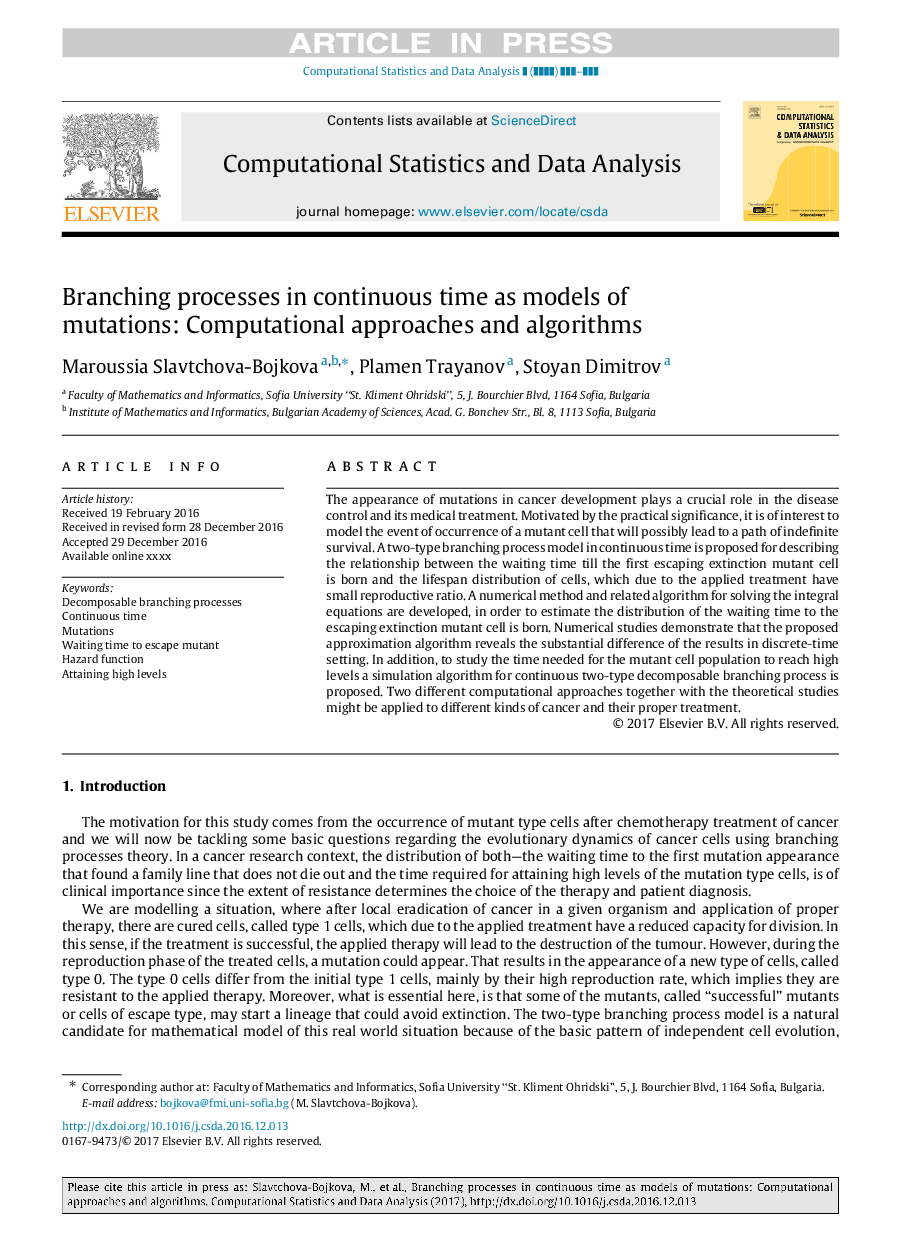| Article ID | Journal | Published Year | Pages | File Type |
|---|---|---|---|---|
| 4949277 | Computational Statistics & Data Analysis | 2017 | 14 Pages |
Abstract
The appearance of mutations in cancer development plays a crucial role in the disease control and its medical treatment. Motivated by the practical significance, it is of interest to model the event of occurrence of a mutant cell that will possibly lead to a path of indefinite survival. A two-type branching process model in continuous time is proposed for describing the relationship between the waiting time till the first escaping extinction mutant cell is born and the lifespan distribution of cells, which due to the applied treatment have small reproductive ratio. A numerical method and related algorithm for solving the integral equations are developed, in order to estimate the distribution of the waiting time to the escaping extinction mutant cell is born. Numerical studies demonstrate that the proposed approximation algorithm reveals the substantial difference of the results in discrete-time setting. In addition, to study the time needed for the mutant cell population to reach high levels a simulation algorithm for continuous two-type decomposable branching process is proposed. Two different computational approaches together with the theoretical studies might be applied to different kinds of cancer and their proper treatment.
Related Topics
Physical Sciences and Engineering
Computer Science
Computational Theory and Mathematics
Authors
Maroussia Slavtchova-Bojkova, Plamen Trayanov, Stoyan Dimitrov,
